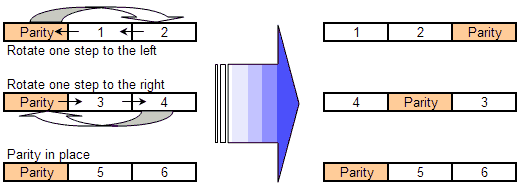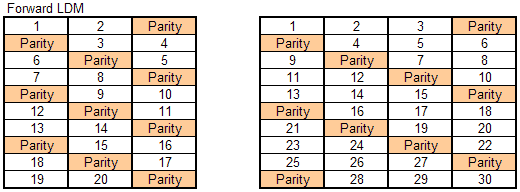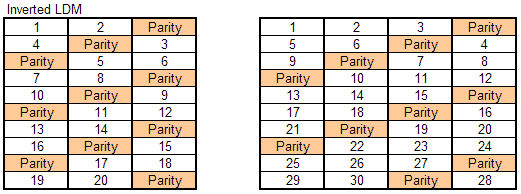Windows 2000 and higher (or, more precisely, the Logical Disk Manager - LDM -
component) uses more sophisticated algorithm to place data to achieve better
block spacing. The process of selecting what goes where is best described in two
steps:
- Write parity into the first column of the array, followed by the data
blocks in ascending order.
- Rotate the rows until parity "slips" into its place.
This results in ordering different than a "checkerboard" layout, as
illustrated below:

Please note that "forward LDM" layout
results in minimum distance between blocks in the same column, which is not very
efficient performance-wise. So it is not used. Contrary to that, an "inverted
LDM" layout gives the largest possible difference between two blocks in the
column (equal to the number of the array member disks). This layout is used by
Windows to achieve maximum performance of the RAID5 array. The net result is as follows:

